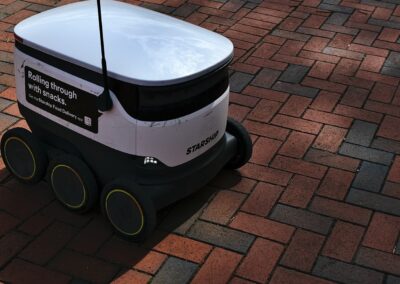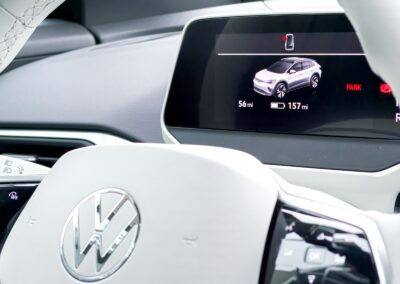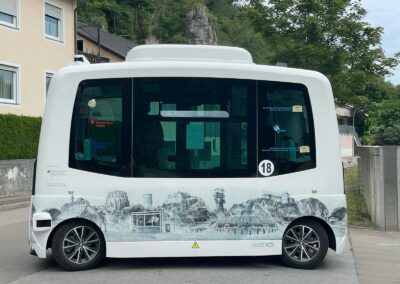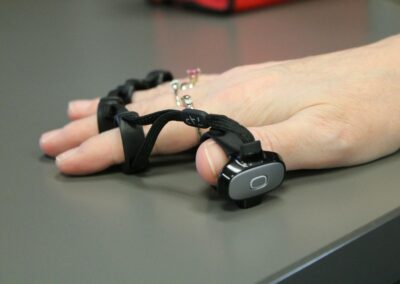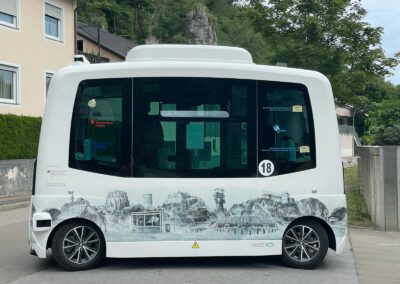Transforming the Automotive Industry with Digital Twins
Digital Twins as a Catalyst for Autonomous Vehicles
The role of digital twins for autonomous vehicles represents a groundbreaking advancement in the automotive industry, poised to revolutionize how vehicles are designed, tested, and operated. Digital twins are dynamic virtual models that replicate physical systems, providing a comprehensive simulation of real-world performance. In the context of autonomous vehicles, these digital replicas are instrumental in enhancing the development and deployment of self-driving technology.
In regions like Saudi Arabia and the UAE, where innovation and technological advancement are central to economic growth, digital twins are playing a crucial role in shaping the future of transportation. By leveraging digital twins, automotive manufacturers can create highly accurate simulations of autonomous vehicles, allowing for extensive testing and optimization before physical prototypes are built. This approach not only accelerates the development process but also reduces costs and improves the reliability of autonomous driving systems.
For business executives and entrepreneurs in the automotive sector, understanding the impact of digital twins is essential for staying competitive. The ability to model complex driving scenarios, analyze vehicle behavior, and test various algorithms in a virtual environment provides a significant advantage in developing cutting-edge autonomous vehicles. As the automotive industry continues to evolve, the integration of digital twins will be a key driver of innovation and success.
Enhancing Safety and Efficiency through Simulation
One of the most significant benefits of digital twins for autonomous vehicles is their ability to enhance safety and efficiency through advanced simulation techniques. Digital twins allow engineers to replicate and analyze a wide range of driving conditions, from everyday scenarios to extreme weather events. This capability enables thorough testing of autonomous vehicle systems in a controlled virtual environment, ensuring that safety protocols and performance standards are met.
In smart cities such as those in Saudi Arabia and the UAE, where infrastructure and traffic conditions are rapidly evolving, digital twins offer valuable insights for optimizing autonomous vehicle operations. By simulating various traffic patterns, road conditions, and interaction scenarios, digital twins help engineers fine-tune vehicle algorithms and improve overall system performance. This proactive approach to testing and validation contributes to the development of safer and more reliable autonomous vehicles.
Furthermore, digital twins support the optimization of vehicle efficiency by analyzing data related to fuel consumption, energy usage, and route planning. By integrating this information into the virtual models, automotive manufacturers can identify opportunities for enhancing performance and reducing operational costs. The result is a more efficient and cost-effective autonomous driving experience that meets the high standards of modern transportation systems.
Driving Innovation and Competitive Advantage
The use of digital twins for autonomous vehicles is a key driver of innovation and competitive advantage in the automotive industry. By adopting this technology, automotive manufacturers can gain a significant edge in developing and deploying autonomous driving solutions. Digital twins enable rapid iteration and refinement of vehicle designs, algorithms, and systems, facilitating faster time-to-market and improved product offerings.
In regions with ambitious technological goals like Saudi Arabia and the UAE, the integration of digital twins into the automotive industry aligns with broader objectives of fostering innovation and advancing smart transportation solutions. For business leaders and entrepreneurs, investing in digital twin technology represents a strategic opportunity to lead the industry in autonomous vehicle development and capitalize on emerging market trends.
Moreover, digital twins facilitate collaboration and knowledge sharing among industry stakeholders, including manufacturers, technology providers, and regulatory bodies. By creating a shared virtual environment for testing and validation, digital twins enable more effective partnerships and collaborative efforts, driving the development of standardized solutions and best practices for autonomous vehicles.
Challenges and Future Directions
Despite the promising potential of digital twins for autonomous vehicles, there are several challenges that need to be addressed to fully realize their benefits. One key challenge is the need for high-quality data to accurately replicate real-world conditions in virtual models. Ensuring that digital twins capture the complexity of driving scenarios and environmental factors is crucial for effective testing and validation.
Additionally, integrating digital twins with other advanced technologies such as AI and IoT requires robust technical infrastructure and interoperability standards. As the automotive industry moves towards increasingly sophisticated autonomous systems, addressing these technical challenges will be essential for maximizing the impact of digital twins.
Looking ahead, the future of digital twins in the automotive industry holds exciting possibilities. Continued advancements in simulation technology, data analytics, and machine learning will further enhance the capabilities of digital twins, enabling more precise and comprehensive testing of autonomous vehicles. As the industry evolves, digital twins will play a pivotal role in driving innovation, improving safety, and shaping the future of transportation.
Conclusion: Embracing Digital Twins for Autonomous Vehicle Success
The future potential of digital twins for autonomous vehicles is transformative, offering significant benefits for the automotive industry. By leveraging digital twins, manufacturers can accelerate the development of self-driving technology, enhance safety and efficiency, and gain a competitive edge in the market. For business executives and entrepreneurs in Saudi Arabia, the UAE, and beyond, embracing this technology is essential for driving success in the rapidly evolving landscape of autonomous transportation.
As digital twins continue to advance and integrate with other cutting-edge technologies, their role in shaping the future of autonomous vehicles will become increasingly central. By investing in digital twin technology, stakeholders can contribute to the development of safer, more efficient, and innovative transportation solutions, paving the way for a new era of mobility.
—
#DigitalTwins #AutonomousVehicles #AutomotiveIndustry #SaudiArabia #UAE #Riyadh #Dubai #ArtificialIntelligence #Blockchain #TheMetaverse #ExecutiveCoachingServices #GenerativeArtificialIntelligence #ModernTechnology #BusinessSuccess #LeadershipSkills #ProjectManagement


